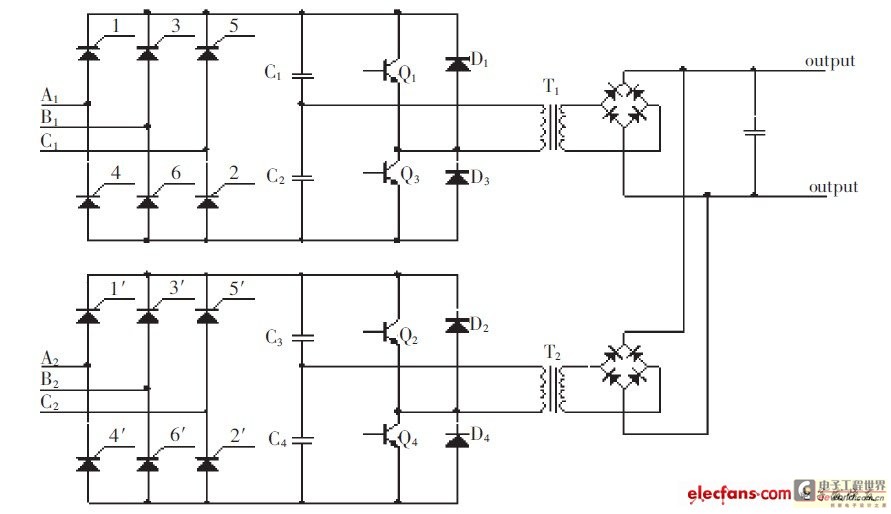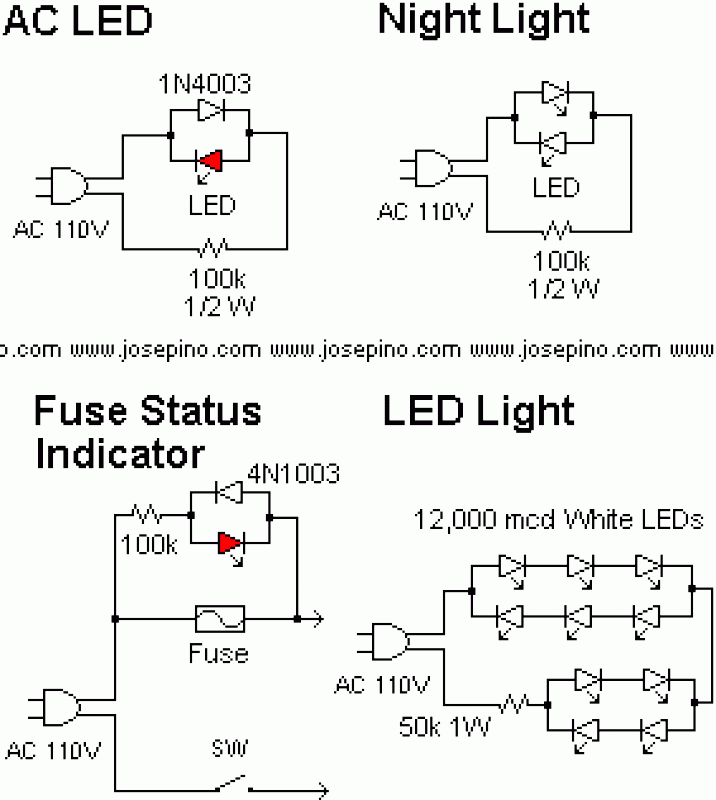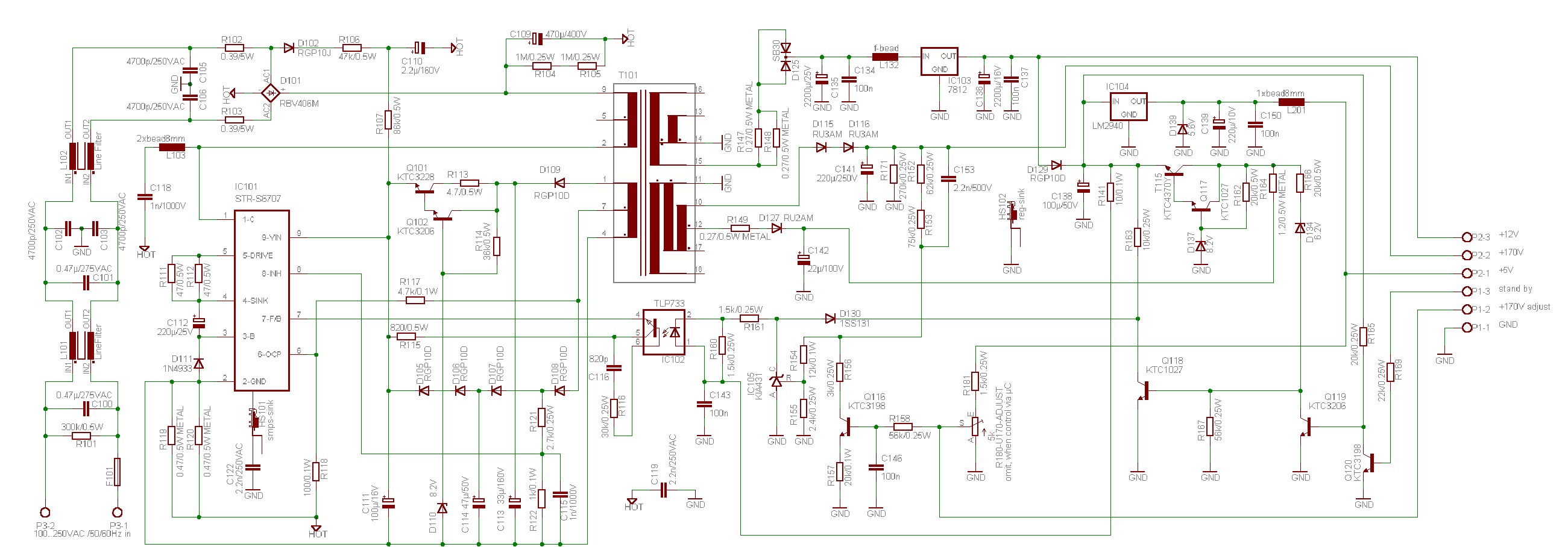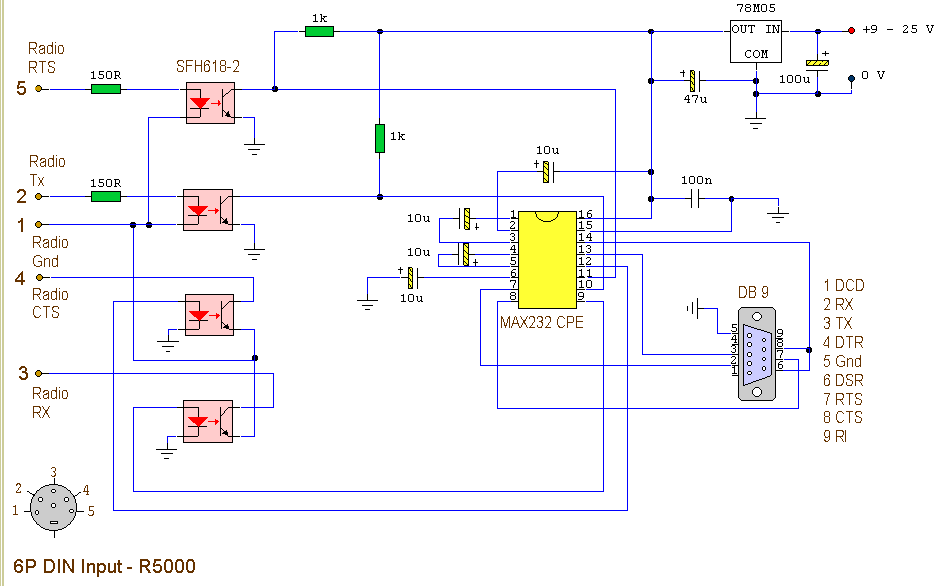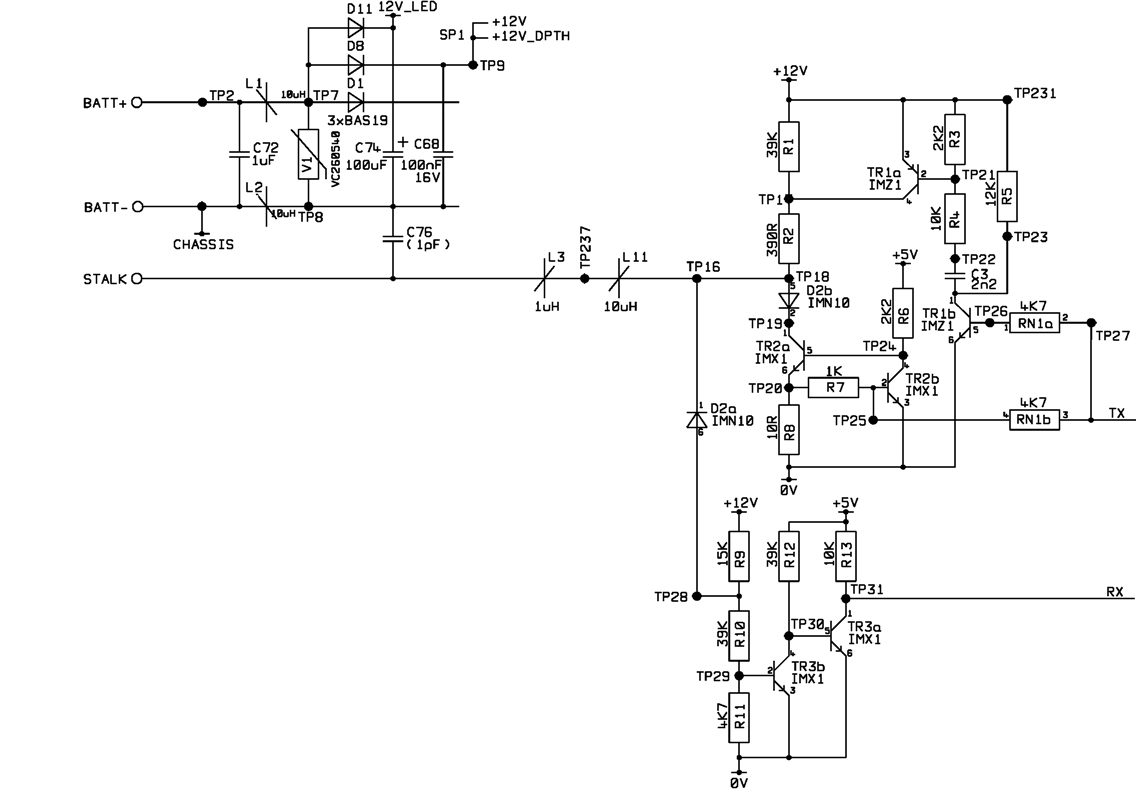
Vacuum Tube Direct Interface
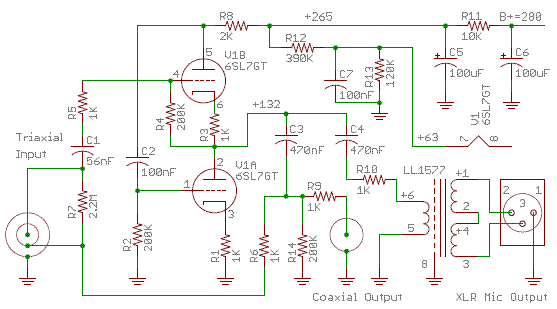
DC power must be supplied to the instrument through either specialized cabling or an internal battery. This should not be applied to collectible instruments that do not include onboard electronics. It can be conveniently implemented using a field effect transistor (FET) or a bipolar junction transistor (BJT) follower, or potentially as an amplifier with modest gain. This configuration can drive any input impedance while eliminating stray capacitance in cabling and connectors. The concept gained popularity with Alembic in the late 1960s and Music Man in the 1970s. Active electronics can be integrated within the cable, allowing for a simple follower or amplifier to be positioned close to the instrument, such as inside the plug backshell at the instrument's end of the cable. The instrument remains unmodified. Solutions of this nature, referred to as Active Plug technology, have been developed. Commercially available "Active Cable" solutions also exist. A high input impedance amplifier is typically the least desirable option, as it does not account for cable capacitance. For some artists, the cable is integral to their sound and should not be altered. However, in scenarios where the desired signal is the voltage source from the pickup, this approach is inadequate unless a method to cancel out the cable capacitance is identified. The following content outlines a developed solution that addresses this issue. Coaxial cable is widely used for musical instrument pickups, often equipped with 1/4" phone plugs on either end. Triaxial cable is also available, featuring an inner center conductor and an outer braided shield, along with an additional inner braided shield that is electrically isolated from both the center conductor and the outer shield. The utilization of the inner shield can vary; in simple applications, it may be connected to the outer shield to create a standard coaxial cable or used to carry the pickup ground separately from earth ground to eliminate ground loops. The developed solution involves driving the inner shield with a signal closely matching the phase and amplitude of the pickup signal. Consequently, both the center conductor and the inner shield carry the same signal, resulting in no potential difference between them. This configuration prevents charge storage in the inner dielectric, effectively reducing the capacitance perceived by the center conductor to nearly zero. When paired with triaxial plugs and jacks designed for this cable type, stray capacitance from the cable and connectors can be minimized significantly. While this may seem to provide an advantage without cost, the reality is that the pickup signal on the center conductor is amplified in current rather than voltage before being used to charge the outer dielectric between the inner and outer shields. This results in a substantial capacitance, much greater than that between the center conductor and the inner shield.
The implementation of this system requires careful attention to the design of the triaxial cable and connectors, ensuring compatibility and optimal performance. The use of high-quality materials for the inner and outer shields, as well as the center conductor, is essential to maintain signal integrity and minimize losses. Additionally, the circuit design should incorporate appropriate filtering and amplification stages to enhance the signal without introducing unwanted noise or distortion. The choice of components, including the FET or BJT used in the follower or amplifier configuration, plays a crucial role in achieving the desired performance characteristics. A thorough understanding of the electrical properties of the materials used, as well as the specific requirements of the musical instrument, is necessary to create an effective solution that meets the needs of musicians while preserving the integrity of their sound.Requires that DC power be brought into the instrument, either through special cabling or an internal battery. Should not be done to collectible instruments if they didn`t come with onboard electronics. Conveniently implemented as a field effect transistor (FET) or bipolar junction transistor (BJT) follower, or perhaps an amplifier with modest gain.
Can drive any impedance input, while eliminating stray capacitance in cabling and connectors. First made popular by Alembic in the late `60s and Music Man in the `70s. Active electronics inside the cable. Next best solution, allows a simple follower or amplifier to be placed very close to the instrument, for instance inside the plug backshell at the instrument end of the cable. Can drive any impedance input, while eliminating stray capacitance except for one plug and one jack. The instrument itself is unmodified. I have previously developed solutions of this type, which I call Active Plug technology. So-called "Active Cable" solutions are also commercially available. High input impedance amplifier. This is usually the least desirable solution, as it takes no account of cable capacitance. For some artists, of course, the cable is part of their sound and shouldn`t be messed with. But in applications where the desired signal is the voltage source inside the pickup, this just won`t do.
Unless, that is, a way can be found to cancel out the cable capacitance. The remainder of this page describes a solution I`ve developed which does just that. Coaxial cable is commonly available and universally used for musical instrument pickups, often with 1/4" phone plugs on each end. But did you know that triaxial cable is also available Like coaxial cable, the triaxial form has an inner center conductor and an outer braided shield, but it also has an inner braided shield which is electrically isolated from both the center conductor and the outer shield.
What you do with the inner shield is up to you, but in simple applications you could connect it to the outer shield resulting in a conventional coaxial cable, or you could use it to carry the pickup ground separate from earth ground to overcome ground loops. But what I have done is to drive the inner shield with a signal which is nearly identical in phase and amplitude to the pickup signal.
So the center conductor and the inner shield are carrying the same signal and have no potential difference between them. The result of this is that no charge is stored in the inner dielectric, and the capacitance seen by the center conductor is essentially zero.
When used with triaxial plugs and jacks meant to go with this type of cable, stray capacitance due to cable and connectors can be made arbitrarily small. This may sound like you are getting something for nothing, but what is actually happening is that the pickup signal on the center conductor is amplified, not in voltage but in current, before it is used to charge the outer dielectric, between inner and outer shields.
This represents a very large capacitance, much larger than the capacitance from center conductor to inner shield, but t 🔗 External reference
The implementation of this system requires careful attention to the design of the triaxial cable and connectors, ensuring compatibility and optimal performance. The use of high-quality materials for the inner and outer shields, as well as the center conductor, is essential to maintain signal integrity and minimize losses. Additionally, the circuit design should incorporate appropriate filtering and amplification stages to enhance the signal without introducing unwanted noise or distortion. The choice of components, including the FET or BJT used in the follower or amplifier configuration, plays a crucial role in achieving the desired performance characteristics. A thorough understanding of the electrical properties of the materials used, as well as the specific requirements of the musical instrument, is necessary to create an effective solution that meets the needs of musicians while preserving the integrity of their sound.Requires that DC power be brought into the instrument, either through special cabling or an internal battery. Should not be done to collectible instruments if they didn`t come with onboard electronics. Conveniently implemented as a field effect transistor (FET) or bipolar junction transistor (BJT) follower, or perhaps an amplifier with modest gain.
Can drive any impedance input, while eliminating stray capacitance in cabling and connectors. First made popular by Alembic in the late `60s and Music Man in the `70s. Active electronics inside the cable. Next best solution, allows a simple follower or amplifier to be placed very close to the instrument, for instance inside the plug backshell at the instrument end of the cable. Can drive any impedance input, while eliminating stray capacitance except for one plug and one jack. The instrument itself is unmodified. I have previously developed solutions of this type, which I call Active Plug technology. So-called "Active Cable" solutions are also commercially available. High input impedance amplifier. This is usually the least desirable solution, as it takes no account of cable capacitance. For some artists, of course, the cable is part of their sound and shouldn`t be messed with. But in applications where the desired signal is the voltage source inside the pickup, this just won`t do.
Unless, that is, a way can be found to cancel out the cable capacitance. The remainder of this page describes a solution I`ve developed which does just that. Coaxial cable is commonly available and universally used for musical instrument pickups, often with 1/4" phone plugs on each end. But did you know that triaxial cable is also available Like coaxial cable, the triaxial form has an inner center conductor and an outer braided shield, but it also has an inner braided shield which is electrically isolated from both the center conductor and the outer shield.
What you do with the inner shield is up to you, but in simple applications you could connect it to the outer shield resulting in a conventional coaxial cable, or you could use it to carry the pickup ground separate from earth ground to overcome ground loops. But what I have done is to drive the inner shield with a signal which is nearly identical in phase and amplitude to the pickup signal.
So the center conductor and the inner shield are carrying the same signal and have no potential difference between them. The result of this is that no charge is stored in the inner dielectric, and the capacitance seen by the center conductor is essentially zero.
When used with triaxial plugs and jacks meant to go with this type of cable, stray capacitance due to cable and connectors can be made arbitrarily small. This may sound like you are getting something for nothing, but what is actually happening is that the pickup signal on the center conductor is amplified, not in voltage but in current, before it is used to charge the outer dielectric, between inner and outer shields.
This represents a very large capacitance, much larger than the capacitance from center conductor to inner shield, but t 🔗 External reference

